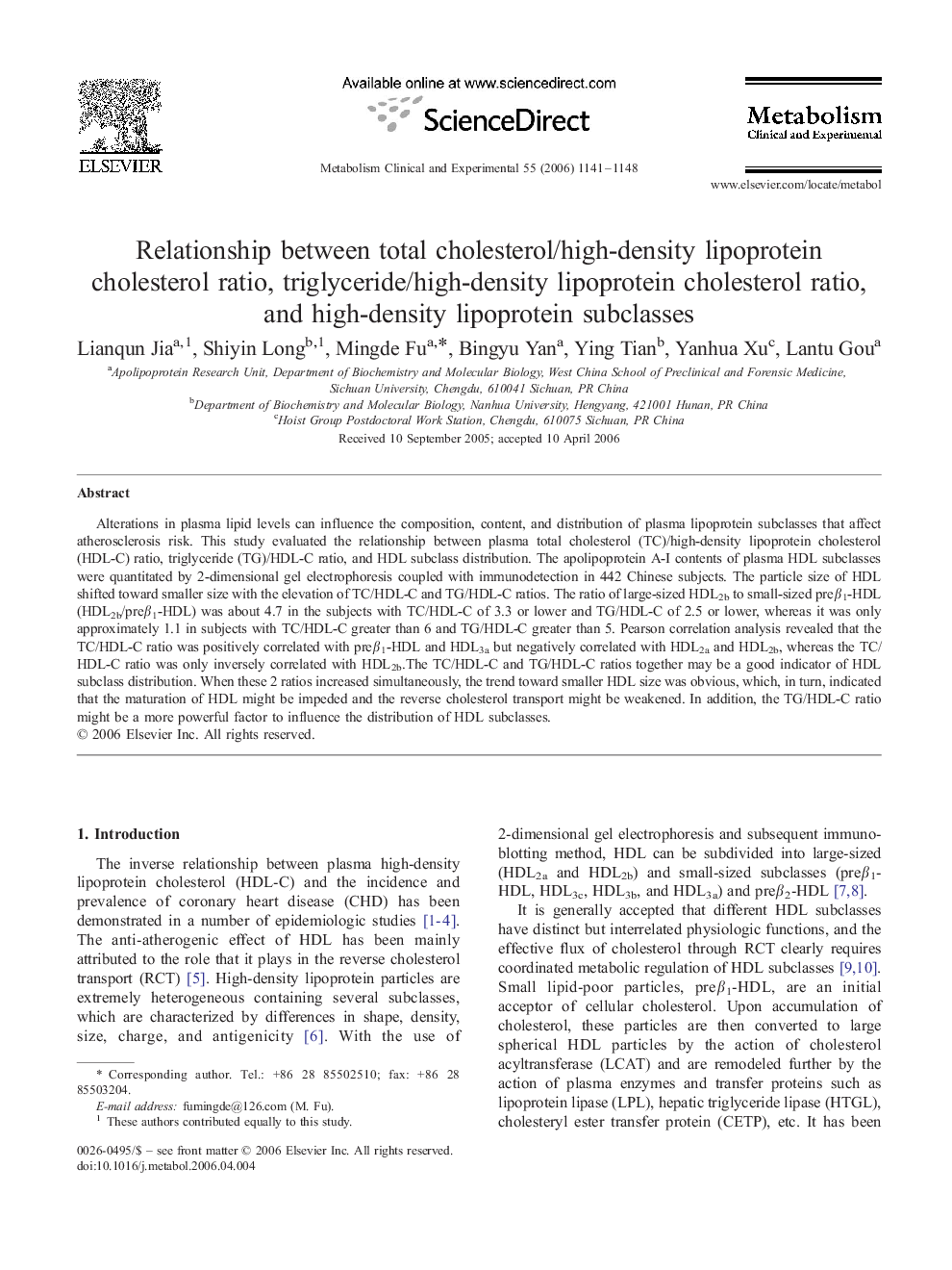| Article ID | Journal | Published Year | Pages | File Type |
|---|---|---|---|---|
| 2807616 | Metabolism | 2006 | 8 Pages |
Alterations in plasma lipid levels can influence the composition, content, and distribution of plasma lipoprotein subclasses that affect atherosclerosis risk. This study evaluated the relationship between plasma total cholesterol (TC)/high-density lipoprotein cholesterol (HDL-C) ratio, triglyceride (TG)/HDL-C ratio, and HDL subclass distribution. The apolipoprotein A-I contents of plasma HDL subclasses were quantitated by 2-dimensional gel electrophoresis coupled with immunodetection in 442 Chinese subjects. The particle size of HDL shifted toward smaller size with the elevation of TC/HDL-C and TG/HDL-C ratios. The ratio of large-sized HDL2b to small-sized preβ1-HDL (HDL2b/preβ1-HDL) was about 4.7 in the subjects with TC/HDL-C of 3.3 or lower and TG/HDL-C of 2.5 or lower, whereas it was only approximately 1.1 in subjects with TC/HDL-C greater than 6 and TG/HDL-C greater than 5. Pearson correlation analysis revealed that the TC/HDL-C ratio was positively correlated with preβ1-HDL and HDL3a but negatively correlated with HDL2a and HDL2b, whereas the TC/HDL-C ratio was only inversely correlated with HDL2b.The TC/HDL-C and TG/HDL-C ratios together may be a good indicator of HDL subclass distribution. When these 2 ratios increased simultaneously, the trend toward smaller HDL size was obvious, which, in turn, indicated that the maturation of HDL might be impeded and the reverse cholesterol transport might be weakened. In addition, the TG/HDL-C ratio might be a more powerful factor to influence the distribution of HDL subclasses.
